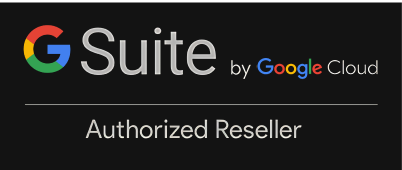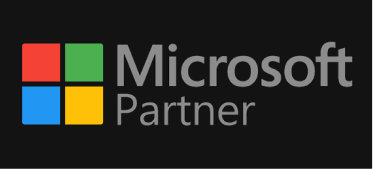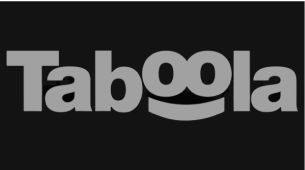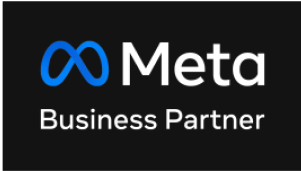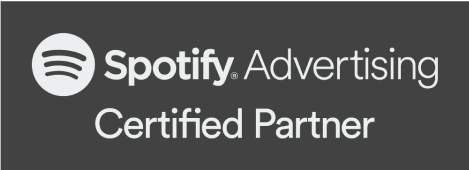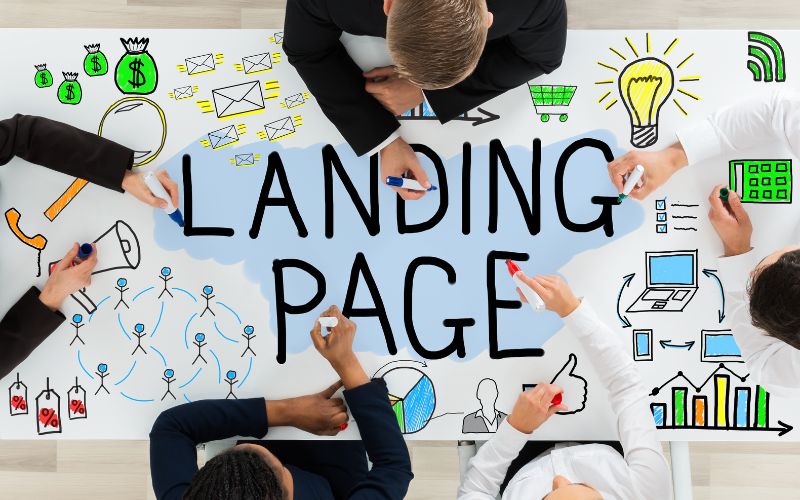
Did you know that the average landing page converts at just 26%? That means three out of four visitors click away without signing up, buying, or even sticking around long enough to care. Ouch. But here is the good news, landing page design is constantly evolving, and 2025 is bringing some seriously exciting changes. The way people interact with websites is shifting, and if you want to grab and keep their attention, your landing pages need to keep up. So, what is changing in landing page design trends this year?
Source: ecommercebonsai.com
Well, this year, the brands that win won’t have the fanciest graphics. They will be the ones who understand their audience on a deeper level—how they think, how they scroll, and what makes them pause. Landing page design in 2025 is shifting toward something more human, more intuitive, and more alive. And if you want to stay ahead of the game, you will need to know what is coming. Ready to see what is shaping the future of landing pages? Let’s go.
What’s Inside:
- Landing Page vs. Website: What is the Difference?
- Top Landing Page Design Trends to Watch in 2025
- Make Landing Page Design Trends Work for You
Landing Page vs. Website: What is the Difference?
A landing page is a single, focused page designed for one purpose, usually to convert visitors into leads or customers. It is all about simplicity and impact, with minimal distractions, a clear call-to-action (CTA), and often tied to a specific campaign, like a Google Ads promotion or an email offer.
In contrast, a website is a more comprehensive platform that provides broader information about your business, services, and brand. It includes multiple pages, think home, about, services, and contact, offering a full experience for visitors to explore.
Often, businesses use both, a website for general brand presence and landing pages that convert leads from the focused campaigns. The key is knowing when to use each strategically to get the best results.
Top Landing Page Design Trends to Watch in 2025
Think about it, when someone lands on your page, you have got just a few seconds to grab their attention. If your design isn’t working for you, it is working against you.
Land more leads with the following landing page design trends:
Monochromatic Aesthetic
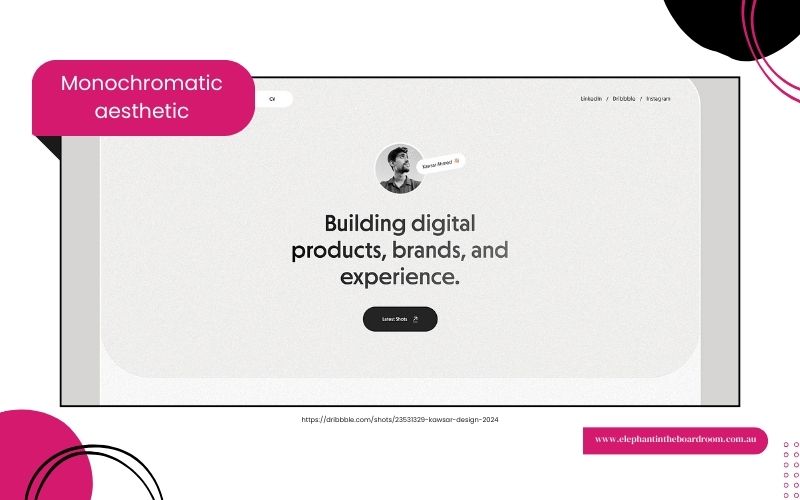
A monochromatic colour scheme keeps things clean, stylish, and professional. Instead of using multiple colours that might clash, this approach sticks to different shades of the same hue. It creates a polished look that feels modern and easy on the eyes.
It is perfect for brands that want a minimalist but high-end feel. Choose a colour representing your brand well and play around with different intensities to create balance.
Bold Typography
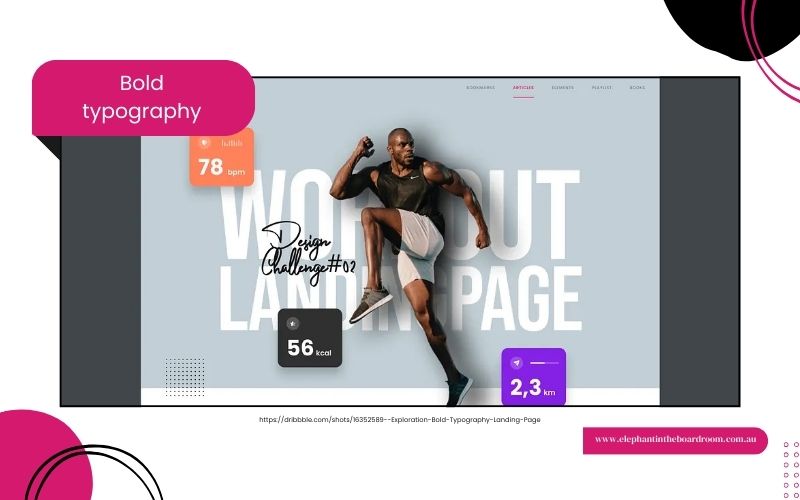
Words don’t just need to be read, they need to be seen. This year, landing pages will use oversized, attention-grabbing typography to make a statement. Avoid overly decorative fonts that are hard to scan. Instead, go for big, clear letters that demand attention while still fitting seamlessly with your overall design.
Hero Video
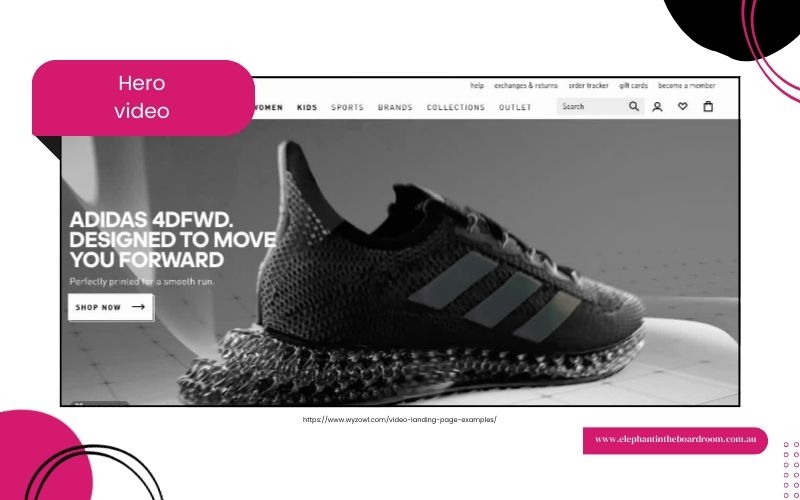
Static images are no longer enough, full-screen videos are taking over as the new standard for landing pages. Videos help build trust faster than text alone and make visitors feel like they are experiencing something instead of just reading about it.
To make the most of this trend, keep your video short and impactful. Avoid anything too flashy or distracting; the goal is to enhance the user experience, not overwhelm it.
2000s Nostalgia

Y2K aesthetics are making a comeback, bringing back neon colours, pixelated fonts, and quirky design elements inspired by the early internet. This trend taps into nostalgia, especially for Millennials and Gen Z, who grew up in the era of dial-up connections and chunky desktop computers.
But nostalgia works best when done in moderation. A splash of pixel art or a throwback font can be eye-catching, but avoid making your landing page feel outdated. Use elements that remind people of the past without sacrificing the ease and functionality of modern design.
Dynamic Landing Pages
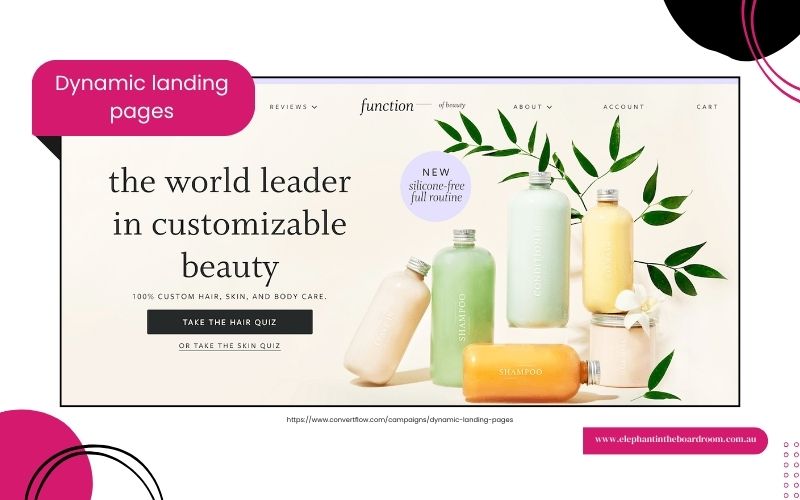
Dynamic landing pages include subtle animations, hover effects, and real-time content updates that make the experience feel more engaging. Small details, like a button that changes colour when hovered over or a background that shifts as you scroll, keep visitors interested. Adding movement doesn’t mean making things complicated. Keep interactions simple and intuitive so they enhance the experience rather than slow it down.
Detailed Footers

This 2025, expect to see landing page footers packed with useful content. Since many visitors scroll all the way down before deciding what to do next, a well-designed footer can help keep them engaged. Organise it well, keep the design consistent with the rest of your page, and make sure it looks great on mobile devices too.
Gradient Colour Schemes

Flat colours are fading into the background as gradients become a favourite choice for web designers. Instead of a single solid colour, gradients blend two or more shades to create a smooth, eye-catching effect. When using gradients, the key is balance. Experiment with different combinations to find the right feel for your brand.
Horizontal Scrolling

Most websites scroll vertically, but in 2025, more landing pages will experiment with horizontal scrolling. This works especially well for portfolios, product showcases, and storytelling-based pages. However, horizontal scrolling needs to be done right. Many users aren’t used to it, so clear navigation cues are essential.
Full-Page Headers
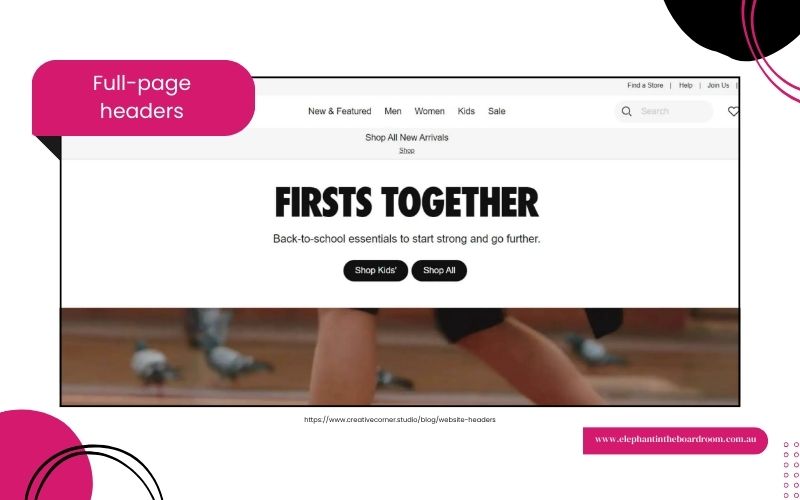
Your header is the first thing visitors see, so why not make it unforgettable? Full-page headers take up the entire screen, putting your message front and centre. To make this trend work for you, keep the design uncluttered and make sure your call-to-action stands out.
Parallax Scrolling
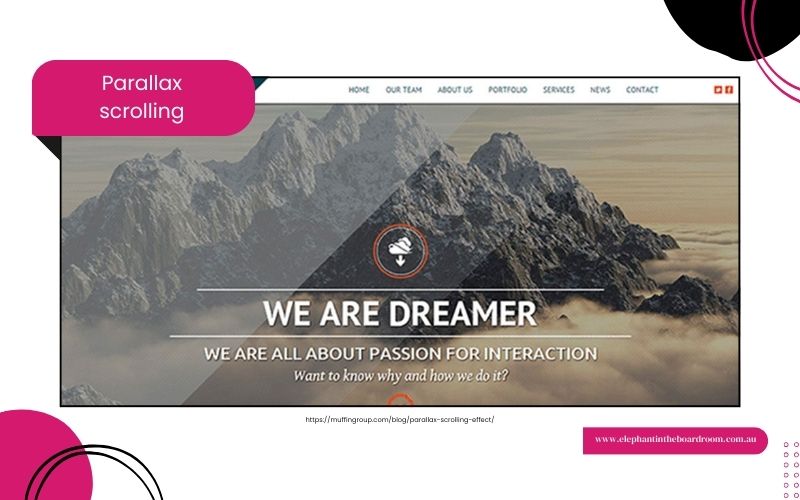
Parallax scrolling creates a 3D-like effect by moving background elements at a different speed than the foreground. This adds depth to a page and makes the scrolling experience feel more immersive. But too much parallax can be distracting. The trick is to use it subtly, just enough to enhance the design without taking focus away from the content.
Make Landing Page Design Trends Work for You
A great landing page is more than just looking beautiful. It is also about creating experiences that grab attention and make visitors want to take action. The best brands know this, and they’re constantly evolving to stay ahead.
So, what is your next move? You could stick with the same old design and hope for the best… or you could take action and create a landing page that stops the scroll, captures attention, and drives real results. The choice is yours, but if you are ready to step it up, now is the time. Get in touch with us today, and let’s make your landing pages work harder, smarter, and better than ever before.

Did you know that the average landing page converts at just 26%? That means three out of four visitors click away without signing up, buying, or even sticking around long enough to care. Ouch. But here is the good news, landing page design is constantly evolving, and 2025 is bringing some seriously exciting changes. The way people interact with websites is shifting, and if you want to grab and keep their attention, your landing pages need to keep up. So, what is changing in landing page design trends this year?
Source: ecommercebonsai.com
Well, this year, the brands that win won’t have the fanciest graphics. They will be the ones who understand their audience on a deeper level—how they think, how they scroll, and what makes them pause. Landing page design in 2025 is shifting toward something more human, more intuitive, and more alive. And if you want to stay ahead of the game, you will need to know what is coming. Ready to see what is shaping the future of landing pages? Let’s go.
What’s Inside:
- Landing Page vs. Website: What is the Difference?
- Top Landing Page Design Trends to Watch in 2025
- Make Landing Page Design Trends Work for You
Landing Page vs. Website: What is the Difference?
A landing page is a single, focused page designed for one purpose, usually to convert visitors into leads or customers. It is all about simplicity and impact, with minimal distractions, a clear call-to-action (CTA), and often tied to a specific campaign, like a Google Ads promotion or an email offer.
In contrast, a website is a more comprehensive platform that provides broader information about your business, services, and brand. It includes multiple pages, think home, about, services, and contact, offering a full experience for visitors to explore.
Often, businesses use both, a website for general brand presence and landing pages that convert leads from the focused campaigns. The key is knowing when to use each strategically to get the best results.
Top Landing Page Design Trends to Watch in 2025
Think about it, when someone lands on your page, you have got just a few seconds to grab their attention. If your design isn’t working for you, it is working against you.
Land more leads with the following landing page design trends:
Monochromatic Aesthetic

A monochromatic colour scheme keeps things clean, stylish, and professional. Instead of using multiple colours that might clash, this approach sticks to different shades of the same hue. It creates a polished look that feels modern and easy on the eyes.
It is perfect for brands that want a minimalist but high-end feel. Choose a colour representing your brand well and play around with different intensities to create balance.
Bold Typography

Words don’t just need to be read, they need to be seen. This year, landing pages will use oversized, attention-grabbing typography to make a statement. Avoid overly decorative fonts that are hard to scan. Instead, go for big, clear letters that demand attention while still fitting seamlessly with your overall design.
Hero Video

Static images are no longer enough, full-screen videos are taking over as the new standard for landing pages. Videos help build trust faster than text alone and make visitors feel like they are experiencing something instead of just reading about it.
To make the most of this trend, keep your video short and impactful. Avoid anything too flashy or distracting; the goal is to enhance the user experience, not overwhelm it.
2000s Nostalgia

Y2K aesthetics are making a comeback, bringing back neon colours, pixelated fonts, and quirky design elements inspired by the early internet. This trend taps into nostalgia, especially for Millennials and Gen Z, who grew up in the era of dial-up connections and chunky desktop computers.
But nostalgia works best when done in moderation. A splash of pixel art or a throwback font can be eye-catching, but avoid making your landing page feel outdated. Use elements that remind people of the past without sacrificing the ease and functionality of modern design.
Dynamic Landing Pages

Dynamic landing pages include subtle animations, hover effects, and real-time content updates that make the experience feel more engaging. Small details, like a button that changes colour when hovered over or a background that shifts as you scroll, keep visitors interested. Adding movement doesn’t mean making things complicated. Keep interactions simple and intuitive so they enhance the experience rather than slow it down.
Detailed Footers

This 2025, expect to see landing page footers packed with useful content. Since many visitors scroll all the way down before deciding what to do next, a well-designed footer can help keep them engaged. Organise it well, keep the design consistent with the rest of your page, and make sure it looks great on mobile devices too.
Gradient Colour Schemes

Flat colours are fading into the background as gradients become a favourite choice for web designers. Instead of a single solid colour, gradients blend two or more shades to create a smooth, eye-catching effect. When using gradients, the key is balance. Experiment with different combinations to find the right feel for your brand.
Horizontal Scrolling

Most websites scroll vertically, but in 2025, more landing pages will experiment with horizontal scrolling. This works especially well for portfolios, product showcases, and storytelling-based pages. However, horizontal scrolling needs to be done right. Many users aren’t used to it, so clear navigation cues are essential.
Full-Page Headers

Your header is the first thing visitors see, so why not make it unforgettable? Full-page headers take up the entire screen, putting your message front and centre. To make this trend work for you, keep the design uncluttered and make sure your call-to-action stands out.
Parallax Scrolling

Parallax scrolling creates a 3D-like effect by moving background elements at a different speed than the foreground. This adds depth to a page and makes the scrolling experience feel more immersive. But too much parallax can be distracting. The trick is to use it subtly, just enough to enhance the design without taking focus away from the content.
Make Landing Page Design Trends Work for You
A great landing page is more than just looking beautiful. It is also about creating experiences that grab attention and make visitors want to take action. The best brands know this, and they’re constantly evolving to stay ahead.
So, what is your next move? You could stick with the same old design and hope for the best… or you could take action and create a landing page that stops the scroll, captures attention, and drives real results. The choice is yours, but if you are ready to step it up, now is the time. Get in touch with us today, and let’s make your landing pages work harder, smarter, and better than ever before.

Did you know that the average landing page converts at just 26%? That means three out of four visitors click away without signing up, buying, or even sticking around long enough to care. Ouch. But here is the good news, landing page design is constantly evolving, and 2025 is bringing some seriously exciting changes. The way people interact with websites is shifting, and if you want to grab and keep their attention, your landing pages need to keep up. So, what is changing in landing page design trends this year?
Source: ecommercebonsai.com
Well, this year, the brands that win won’t have the fanciest graphics. They will be the ones who understand their audience on a deeper level—how they think, how they scroll, and what makes them pause. Landing page design in 2025 is shifting toward something more human, more intuitive, and more alive. And if you want to stay ahead of the game, you will need to know what is coming. Ready to see what is shaping the future of landing pages? Let’s go.
What’s Inside:
- Landing Page vs. Website: What is the Difference?
- Top Landing Page Design Trends to Watch in 2025
- Make Landing Page Design Trends Work for You
Landing Page vs. Website: What is the Difference?
A landing page is a single, focused page designed for one purpose, usually to convert visitors into leads or customers. It is all about simplicity and impact, with minimal distractions, a clear call-to-action (CTA), and often tied to a specific campaign, like a Google Ads promotion or an email offer.
In contrast, a website is a more comprehensive platform that provides broader information about your business, services, and brand. It includes multiple pages, think home, about, services, and contact, offering a full experience for visitors to explore.
Often, businesses use both, a website for general brand presence and landing pages that convert leads from the focused campaigns. The key is knowing when to use each strategically to get the best results.
Top Landing Page Design Trends to Watch in 2025
Think about it, when someone lands on your page, you have got just a few seconds to grab their attention. If your design isn’t working for you, it is working against you.
Land more leads with the following landing page design trends:
Monochromatic Aesthetic

A monochromatic colour scheme keeps things clean, stylish, and professional. Instead of using multiple colours that might clash, this approach sticks to different shades of the same hue. It creates a polished look that feels modern and easy on the eyes.
It is perfect for brands that want a minimalist but high-end feel. Choose a colour representing your brand well and play around with different intensities to create balance.
Bold Typography

Words don’t just need to be read, they need to be seen. This year, landing pages will use oversized, attention-grabbing typography to make a statement. Avoid overly decorative fonts that are hard to scan. Instead, go for big, clear letters that demand attention while still fitting seamlessly with your overall design.
Hero Video

Static images are no longer enough, full-screen videos are taking over as the new standard for landing pages. Videos help build trust faster than text alone and make visitors feel like they are experiencing something instead of just reading about it.
To make the most of this trend, keep your video short and impactful. Avoid anything too flashy or distracting; the goal is to enhance the user experience, not overwhelm it.
2000s Nostalgia

Y2K aesthetics are making a comeback, bringing back neon colours, pixelated fonts, and quirky design elements inspired by the early internet. This trend taps into nostalgia, especially for Millennials and Gen Z, who grew up in the era of dial-up connections and chunky desktop computers.
But nostalgia works best when done in moderation. A splash of pixel art or a throwback font can be eye-catching, but avoid making your landing page feel outdated. Use elements that remind people of the past without sacrificing the ease and functionality of modern design.
Dynamic Landing Pages

Dynamic landing pages include subtle animations, hover effects, and real-time content updates that make the experience feel more engaging. Small details, like a button that changes colour when hovered over or a background that shifts as you scroll, keep visitors interested. Adding movement doesn’t mean making things complicated. Keep interactions simple and intuitive so they enhance the experience rather than slow it down.
Detailed Footers

This 2025, expect to see landing page footers packed with useful content. Since many visitors scroll all the way down before deciding what to do next, a well-designed footer can help keep them engaged. Organise it well, keep the design consistent with the rest of your page, and make sure it looks great on mobile devices too.
Gradient Colour Schemes

Flat colours are fading into the background as gradients become a favourite choice for web designers. Instead of a single solid colour, gradients blend two or more shades to create a smooth, eye-catching effect. When using gradients, the key is balance. Experiment with different combinations to find the right feel for your brand.
Horizontal Scrolling

Most websites scroll vertically, but in 2025, more landing pages will experiment with horizontal scrolling. This works especially well for portfolios, product showcases, and storytelling-based pages. However, horizontal scrolling needs to be done right. Many users aren’t used to it, so clear navigation cues are essential.
Full-Page Headers

Your header is the first thing visitors see, so why not make it unforgettable? Full-page headers take up the entire screen, putting your message front and centre. To make this trend work for you, keep the design uncluttered and make sure your call-to-action stands out.
Parallax Scrolling

Parallax scrolling creates a 3D-like effect by moving background elements at a different speed than the foreground. This adds depth to a page and makes the scrolling experience feel more immersive. But too much parallax can be distracting. The trick is to use it subtly, just enough to enhance the design without taking focus away from the content.
Make Landing Page Design Trends Work for You
A great landing page is more than just looking beautiful. It is also about creating experiences that grab attention and make visitors want to take action. The best brands know this, and they’re constantly evolving to stay ahead.
So, what is your next move? You could stick with the same old design and hope for the best… or you could take action and create a landing page that stops the scroll, captures attention, and drives real results. The choice is yours, but if you are ready to step it up, now is the time. Get in touch with us today, and let’s make your landing pages work harder, smarter, and better than ever before.

Did you know that the average landing page converts at just 26%? That means three out of four visitors click away without signing up, buying, or even sticking around long enough to care. Ouch. But here is the good news, landing page design is constantly evolving, and 2025 is bringing some seriously exciting changes. The way people interact with websites is shifting, and if you want to grab and keep their attention, your landing pages need to keep up. So, what is changing in landing page design trends this year?
Source: ecommercebonsai.com
Well, this year, the brands that win won’t have the fanciest graphics. They will be the ones who understand their audience on a deeper level—how they think, how they scroll, and what makes them pause. Landing page design in 2025 is shifting toward something more human, more intuitive, and more alive. And if you want to stay ahead of the game, you will need to know what is coming. Ready to see what is shaping the future of landing pages? Let’s go.
What’s Inside:
- Landing Page vs. Website: What is the Difference?
- Top Landing Page Design Trends to Watch in 2025
- Make Landing Page Design Trends Work for You
Landing Page vs. Website: What is the Difference?
A landing page is a single, focused page designed for one purpose, usually to convert visitors into leads or customers. It is all about simplicity and impact, with minimal distractions, a clear call-to-action (CTA), and often tied to a specific campaign, like a Google Ads promotion or an email offer.
In contrast, a website is a more comprehensive platform that provides broader information about your business, services, and brand. It includes multiple pages, think home, about, services, and contact, offering a full experience for visitors to explore.
Often, businesses use both, a website for general brand presence and landing pages that convert leads from the focused campaigns. The key is knowing when to use each strategically to get the best results.
Top Landing Page Design Trends to Watch in 2025
Think about it, when someone lands on your page, you have got just a few seconds to grab their attention. If your design isn’t working for you, it is working against you.
Land more leads with the following landing page design trends:
Monochromatic Aesthetic

A monochromatic colour scheme keeps things clean, stylish, and professional. Instead of using multiple colours that might clash, this approach sticks to different shades of the same hue. It creates a polished look that feels modern and easy on the eyes.
It is perfect for brands that want a minimalist but high-end feel. Choose a colour representing your brand well and play around with different intensities to create balance.
Bold Typography

Words don’t just need to be read, they need to be seen. This year, landing pages will use oversized, attention-grabbing typography to make a statement. Avoid overly decorative fonts that are hard to scan. Instead, go for big, clear letters that demand attention while still fitting seamlessly with your overall design.
Hero Video

Static images are no longer enough, full-screen videos are taking over as the new standard for landing pages. Videos help build trust faster than text alone and make visitors feel like they are experiencing something instead of just reading about it.
To make the most of this trend, keep your video short and impactful. Avoid anything too flashy or distracting; the goal is to enhance the user experience, not overwhelm it.
2000s Nostalgia

Y2K aesthetics are making a comeback, bringing back neon colours, pixelated fonts, and quirky design elements inspired by the early internet. This trend taps into nostalgia, especially for Millennials and Gen Z, who grew up in the era of dial-up connections and chunky desktop computers.
But nostalgia works best when done in moderation. A splash of pixel art or a throwback font can be eye-catching, but avoid making your landing page feel outdated. Use elements that remind people of the past without sacrificing the ease and functionality of modern design.
Dynamic Landing Pages

Dynamic landing pages include subtle animations, hover effects, and real-time content updates that make the experience feel more engaging. Small details, like a button that changes colour when hovered over or a background that shifts as you scroll, keep visitors interested. Adding movement doesn’t mean making things complicated. Keep interactions simple and intuitive so they enhance the experience rather than slow it down.
Detailed Footers

This 2025, expect to see landing page footers packed with useful content. Since many visitors scroll all the way down before deciding what to do next, a well-designed footer can help keep them engaged. Organise it well, keep the design consistent with the rest of your page, and make sure it looks great on mobile devices too.
Gradient Colour Schemes

Flat colours are fading into the background as gradients become a favourite choice for web designers. Instead of a single solid colour, gradients blend two or more shades to create a smooth, eye-catching effect. When using gradients, the key is balance. Experiment with different combinations to find the right feel for your brand.
Horizontal Scrolling

Most websites scroll vertically, but in 2025, more landing pages will experiment with horizontal scrolling. This works especially well for portfolios, product showcases, and storytelling-based pages. However, horizontal scrolling needs to be done right. Many users aren’t used to it, so clear navigation cues are essential.
Full-Page Headers

Your header is the first thing visitors see, so why not make it unforgettable? Full-page headers take up the entire screen, putting your message front and centre. To make this trend work for you, keep the design uncluttered and make sure your call-to-action stands out.
Parallax Scrolling

Parallax scrolling creates a 3D-like effect by moving background elements at a different speed than the foreground. This adds depth to a page and makes the scrolling experience feel more immersive. But too much parallax can be distracting. The trick is to use it subtly, just enough to enhance the design without taking focus away from the content.
Make Landing Page Design Trends Work for You
A great landing page is more than just looking beautiful. It is also about creating experiences that grab attention and make visitors want to take action. The best brands know this, and they’re constantly evolving to stay ahead.
So, what is your next move? You could stick with the same old design and hope for the best… or you could take action and create a landing page that stops the scroll, captures attention, and drives real results. The choice is yours, but if you are ready to step it up, now is the time. Get in touch with us today, and let’s make your landing pages work harder, smarter, and better than ever before.
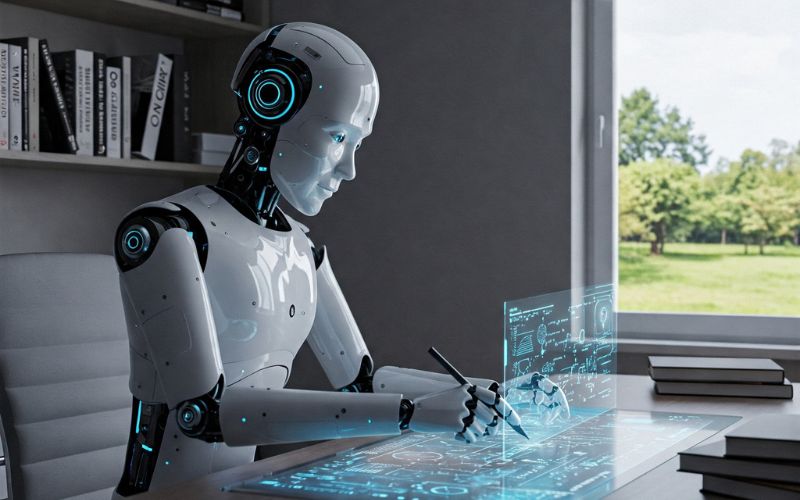
AI powered web design is happening right now. Even if you are a seasoned web designer or a business owner trying to build a site that converts, AI is changing the game in ways that make your life easier. A website that adapts to visitors in real-time, personalises content on the fly, and even fixes its own UX issues before they become problems sounds like something out of a sci-fi movie, but it is not. It is practical, it is happening in 2025, and it is something you can start using today.
But AI isn’t a magic button you press and forget. To get the most out of it, you need to know how to put it to work. Step by step, we will explore how AI simplifies web design and creates a smarter, more dynamic experience for your visitors. By the end, you will have the knowledge and tools to build a website that doesn’t just look good but works harder for you. Let’s get started.
What’s Inside:
- AI Powered Design Tools Market Size 2025 And Growth Rate
- Key Advantages of Having an AI Powered Web Design
- AI Powered Web Design in 2025: A Step-by-Step Guide to Building Smarter Websites
- Take the Leap into AI-Powered Web Design
AI Powered Design Tools Market Size 2025 And Growth Rate
The AI powered design tools market is growing fast, set to jump from $5.54 billion in 2024 to $6.77 billion in 2025, with a 22.2% growth rate. This boom comes as more businesses turn to automation, personalised user experiences, and smarter UI/UX design.
With the rise of e-commerce and the need for accessible, high-quality designs, AI is making it easier than ever to create professional, engaging visuals without the long hours or technical expertise once required.
Key Advantages of Having an AI Powered Web Design

Web design used to take a lot of time and effort. You had to plan layouts, write code, test different elements, and update content constantly. But with AI, things have changed. Now, websites can be built faster, work better, and even adapt to users automatically.
So, what makes AI powered web design such a great choice? Let us look at the biggest benefits:
Cost-Effectiveness
Building a website from scratch can be expensive. You might need designers, developers, and marketing experts, which can add up quickly. AI-powered tools help by automating many of these tasks, like designing layouts, adjusting colours, and even writing content.
Makes Content Creation Easier
Keeping your website fresh with new content is important, but it takes time. AI can help by suggesting blog topics, writing product descriptions, and improving SEO. It can also check how well your content is performing and suggest changes to make it more engaging.
Improves Accessibility for Everyone
A great website should be easy for everyone to use, including people with disabilities. AI can add helpful features like voice navigation, automatic captions, and text descriptions for images. This makes your AI powered web design more welcoming and accessible to all users.
Creates a Better User Experience
AI can track how visitors interact with your website and adjust things in real time. For example, it can suggest products based on browsing history, personalise search results, and show the most relevant content. This makes the website feel more intuitive and engaging for each visitor.
Streamlined Customer Support
No one likes waiting for help. AI chatbots can answer common questions, guide users through problems, and even assist with purchases, all without human intervention. And if a question is too complex, AI can transfer the conversation to a real person.
Boosts Efficiency and Productivity
AI takes care of time-consuming tasks so you can focus on more important things. It can automatically update content, test website performance, and even fix small issues before they become big problems. Instead of spending hours on manual work, you can put your energy into strategy, creativity, and growing your business.
AI Powered Web Design in 2025: A Step-by-Step Guide to Building Smarter Websites
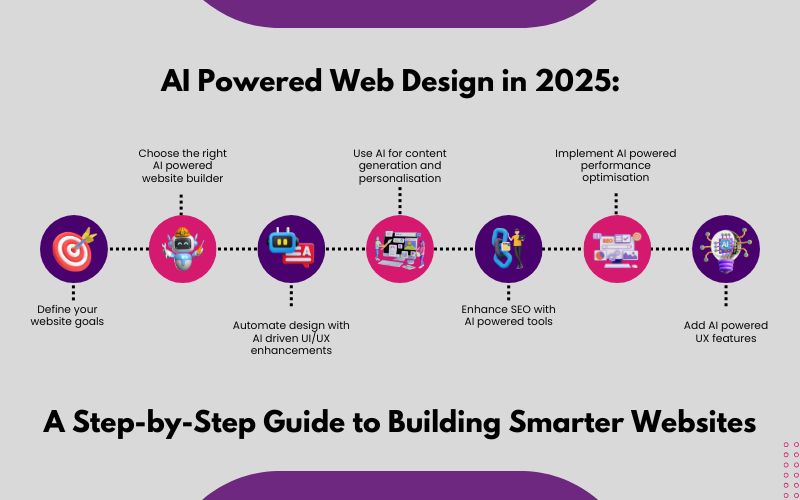
Step 1: Define Your Website Goals
Before you start using AI, you need to know what you want your website to do. Is it for selling products, sharing your work, or getting more leads? AI can make website building easier, but it works best when you give it clear instructions. Think about your audience: who they are, what they need, and how they will use your site. The better you plan, the better AI can help you create something that truly works.
Step 2: Choose the Right AI Powered Website Builder
There are lots of AI-powered website builders out there, but not all of them will suit your needs. Some focus on stunning designs, while others are great for boosting sales or making your site run smoothly.
Pick a tool that matches your goals and offers smart features like automatic branding, AI generated layouts, and easy customisation. The right choice will save you time and effort while still giving you control over how your site looks and feels.
Step 3: Automate Design with AI Driven UI/UX Enhancements
AI isn’t just about building a website, it helps make it easier to use. In 2025, AI tools can track how visitors interact with your site and make smart changes. Buttons can be resized for better clicks, colours can be adjusted for better readability, and layouts can improve based on real user behaviour.
Step 4: Use AI for Content Generation and Personalisation
Writing website content can be time-consuming, but AI can help. AI powered tools can create blog posts, product descriptions, and headlines in seconds. But the real power is in personalisation. AI can show different messages to different visitors based on their location, interests, or past activity on your site. That means every visitor gets an experience that feels tailored just for them, increasing engagement and conversions.
Step 5: Enhance SEO with AI powered tools
Search engine optimisation (SEO) is more than just adding keywords. AI can now scan your site, suggest improvements, and help you rank higher on Google. AI powered SEO tools can write meta descriptions, fix technical errors, and even predict what topics will be popular. They also help optimise your site for voice search and mobile users, making sure you reach as many people as possible.
Step 6: Implement AI Powered Performance Optimisation
A slow website loses visitors fast. AI can help by automatically improving speed and performance. It can shrink large images, clean up messy code, and adjust how your site loads based on traffic levels. AI can even predict when your site will get busy and prepare in advance so it never slows down. With AI handling performance, your website stays fast and smooth, no matter how many people visit.
Step 7: Add AI powered UX Features
AI-powered features can make your website feel smarter and more interactive. Chatbots can answer customer questions instantly, voice search makes it easier to navigate, and AI-driven recommendations show visitors what they’re most likely to be interested in. These small details make a big difference in keeping people engaged and returning.
Take the Leap into AI Powered Web Design
You have made it this far, which means you are already curious about AI powered web design. That is a solid first step. But here is the thing: AI isn’t just a buzzword anymore; it is a real, game-changing tool that can help you build better websites faster. No more endless tweaking, no more guesswork.
Now, it is time to make your move. Don’t just read about AI; start using it. Try out an AI-driven design tool, automate a task that’s been eating up your time, or experiment with AI-generated content. Let us chat about how we can make your site faster, smarter, and more effective. Reach out today, and let us start building the future together.

AI powered web design is happening right now. Even if you are a seasoned web designer or a business owner trying to build a site that converts, AI is changing the game in ways that make your life easier. A website that adapts to visitors in real-time, personalises content on the fly, and even fixes its own UX issues before they become problems sounds like something out of a sci-fi movie, but it is not. It is practical, it is happening in 2025, and it is something you can start using today.
But AI isn’t a magic button you press and forget. To get the most out of it, you need to know how to put it to work. Step by step, we will explore how AI simplifies web design and creates a smarter, more dynamic experience for your visitors. By the end, you will have the knowledge and tools to build a website that doesn’t just look good but works harder for you. Let’s get started.
What’s Inside:
- AI Powered Design Tools Market Size 2025 And Growth Rate
- Key Advantages of Having an AI Powered Web Design
- AI Powered Web Design in 2025: A Step-by-Step Guide to Building Smarter Websites
- Take the Leap into AI-Powered Web Design
AI Powered Design Tools Market Size 2025 And Growth Rate
The AI powered design tools market is growing fast, set to jump from $5.54 billion in 2024 to $6.77 billion in 2025, with a 22.2% growth rate. This boom comes as more businesses turn to automation, personalised user experiences, and smarter UI/UX design.
With the rise of e-commerce and the need for accessible, high-quality designs, AI is making it easier than ever to create professional, engaging visuals without the long hours or technical expertise once required.
Key Advantages of Having an AI Powered Web Design

Web design used to take a lot of time and effort. You had to plan layouts, write code, test different elements, and update content constantly. But with AI, things have changed. Now, websites can be built faster, work better, and even adapt to users automatically.
So, what makes AI powered web design such a great choice? Let us look at the biggest benefits:
Cost-Effectiveness
Building a website from scratch can be expensive. You might need designers, developers, and marketing experts, which can add up quickly. AI-powered tools help by automating many of these tasks, like designing layouts, adjusting colours, and even writing content.
Makes Content Creation Easier
Keeping your website fresh with new content is important, but it takes time. AI can help by suggesting blog topics, writing product descriptions, and improving SEO. It can also check how well your content is performing and suggest changes to make it more engaging.
Improves Accessibility for Everyone
A great website should be easy for everyone to use, including people with disabilities. AI can add helpful features like voice navigation, automatic captions, and text descriptions for images. This makes your AI powered web design more welcoming and accessible to all users.
Creates a Better User Experience
AI can track how visitors interact with your website and adjust things in real time. For example, it can suggest products based on browsing history, personalise search results, and show the most relevant content. This makes the website feel more intuitive and engaging for each visitor.
Streamlined Customer Support
No one likes waiting for help. AI chatbots can answer common questions, guide users through problems, and even assist with purchases, all without human intervention. And if a question is too complex, AI can transfer the conversation to a real person.
Boosts Efficiency and Productivity
AI takes care of time-consuming tasks so you can focus on more important things. It can automatically update content, test website performance, and even fix small issues before they become big problems. Instead of spending hours on manual work, you can put your energy into strategy, creativity, and growing your business.
AI Powered Web Design in 2025: A Step-by-Step Guide to Building Smarter Websites

Step 1: Define Your Website Goals
Before you start using AI, you need to know what you want your website to do. Is it for selling products, sharing your work, or getting more leads? AI can make website building easier, but it works best when you give it clear instructions. Think about your audience: who they are, what they need, and how they will use your site. The better you plan, the better AI can help you create something that truly works.
Step 2: Choose the Right AI Powered Website Builder
There are lots of AI-powered website builders out there, but not all of them will suit your needs. Some focus on stunning designs, while others are great for boosting sales or making your site run smoothly.
Pick a tool that matches your goals and offers smart features like automatic branding, AI generated layouts, and easy customisation. The right choice will save you time and effort while still giving you control over how your site looks and feels.
Step 3: Automate Design with AI Driven UI/UX Enhancements
AI isn’t just about building a website, it helps make it easier to use. In 2025, AI tools can track how visitors interact with your site and make smart changes. Buttons can be resized for better clicks, colours can be adjusted for better readability, and layouts can improve based on real user behaviour.
Step 4: Use AI for Content Generation and Personalisation
Writing website content can be time-consuming, but AI can help. AI powered tools can create blog posts, product descriptions, and headlines in seconds. But the real power is in personalisation. AI can show different messages to different visitors based on their location, interests, or past activity on your site. That means every visitor gets an experience that feels tailored just for them, increasing engagement and conversions.
Step 5: Enhance SEO with AI powered tools
Search engine optimisation (SEO) is more than just adding keywords. AI can now scan your site, suggest improvements, and help you rank higher on Google. AI powered SEO tools can write meta descriptions, fix technical errors, and even predict what topics will be popular. They also help optimise your site for voice search and mobile users, making sure you reach as many people as possible.
Step 6: Implement AI Powered Performance Optimisation
A slow website loses visitors fast. AI can help by automatically improving speed and performance. It can shrink large images, clean up messy code, and adjust how your site loads based on traffic levels. AI can even predict when your site will get busy and prepare in advance so it never slows down. With AI handling performance, your website stays fast and smooth, no matter how many people visit.
Step 7: Add AI powered UX Features
AI-powered features can make your website feel smarter and more interactive. Chatbots can answer customer questions instantly, voice search makes it easier to navigate, and AI-driven recommendations show visitors what they’re most likely to be interested in. These small details make a big difference in keeping people engaged and returning.
Take the Leap into AI Powered Web Design
You have made it this far, which means you are already curious about AI powered web design. That is a solid first step. But here is the thing: AI isn’t just a buzzword anymore; it is a real, game-changing tool that can help you build better websites faster. No more endless tweaking, no more guesswork.
Now, it is time to make your move. Don’t just read about AI; start using it. Try out an AI-driven design tool, automate a task that’s been eating up your time, or experiment with AI-generated content. Let us chat about how we can make your site faster, smarter, and more effective. Reach out today, and let us start building the future together.

AI powered web design is happening right now. Even if you are a seasoned web designer or a business owner trying to build a site that converts, AI is changing the game in ways that make your life easier. A website that adapts to visitors in real-time, personalises content on the fly, and even fixes its own UX issues before they become problems sounds like something out of a sci-fi movie, but it is not. It is practical, it is happening in 2025, and it is something you can start using today.
But AI isn’t a magic button you press and forget. To get the most out of it, you need to know how to put it to work. Step by step, we will explore how AI simplifies web design and creates a smarter, more dynamic experience for your visitors. By the end, you will have the knowledge and tools to build a website that doesn’t just look good but works harder for you. Let’s get started.
What’s Inside:
- AI Powered Design Tools Market Size 2025 And Growth Rate
- Key Advantages of Having an AI Powered Web Design
- AI Powered Web Design in 2025: A Step-by-Step Guide to Building Smarter Websites
- Take the Leap into AI-Powered Web Design
AI Powered Design Tools Market Size 2025 And Growth Rate
The AI powered design tools market is growing fast, set to jump from $5.54 billion in 2024 to $6.77 billion in 2025, with a 22.2% growth rate. This boom comes as more businesses turn to automation, personalised user experiences, and smarter UI/UX design.
With the rise of e-commerce and the need for accessible, high-quality designs, AI is making it easier than ever to create professional, engaging visuals without the long hours or technical expertise once required.
Key Advantages of Having an AI Powered Web Design

Web design used to take a lot of time and effort. You had to plan layouts, write code, test different elements, and update content constantly. But with AI, things have changed. Now, websites can be built faster, work better, and even adapt to users automatically.
So, what makes AI powered web design such a great choice? Let us look at the biggest benefits:
Cost-Effectiveness
Building a website from scratch can be expensive. You might need designers, developers, and marketing experts, which can add up quickly. AI-powered tools help by automating many of these tasks, like designing layouts, adjusting colours, and even writing content.
Makes Content Creation Easier
Keeping your website fresh with new content is important, but it takes time. AI can help by suggesting blog topics, writing product descriptions, and improving SEO. It can also check how well your content is performing and suggest changes to make it more engaging.
Improves Accessibility for Everyone
A great website should be easy for everyone to use, including people with disabilities. AI can add helpful features like voice navigation, automatic captions, and text descriptions for images. This makes your AI powered web design more welcoming and accessible to all users.
Creates a Better User Experience
AI can track how visitors interact with your website and adjust things in real time. For example, it can suggest products based on browsing history, personalise search results, and show the most relevant content. This makes the website feel more intuitive and engaging for each visitor.
Streamlined Customer Support
No one likes waiting for help. AI chatbots can answer common questions, guide users through problems, and even assist with purchases, all without human intervention. And if a question is too complex, AI can transfer the conversation to a real person.
Boosts Efficiency and Productivity
AI takes care of time-consuming tasks so you can focus on more important things. It can automatically update content, test website performance, and even fix small issues before they become big problems. Instead of spending hours on manual work, you can put your energy into strategy, creativity, and growing your business.
AI Powered Web Design in 2025: A Step-by-Step Guide to Building Smarter Websites

Step 1: Define Your Website Goals
Before you start using AI, you need to know what you want your website to do. Is it for selling products, sharing your work, or getting more leads? AI can make website building easier, but it works best when you give it clear instructions. Think about your audience: who they are, what they need, and how they will use your site. The better you plan, the better AI can help you create something that truly works.
Step 2: Choose the Right AI Powered Website Builder
There are lots of AI-powered website builders out there, but not all of them will suit your needs. Some focus on stunning designs, while others are great for boosting sales or making your site run smoothly.
Pick a tool that matches your goals and offers smart features like automatic branding, AI generated layouts, and easy customisation. The right choice will save you time and effort while still giving you control over how your site looks and feels.
Step 3: Automate Design with AI Driven UI/UX Enhancements
AI isn’t just about building a website, it helps make it easier to use. In 2025, AI tools can track how visitors interact with your site and make smart changes. Buttons can be resized for better clicks, colours can be adjusted for better readability, and layouts can improve based on real user behaviour.
Step 4: Use AI for Content Generation and Personalisation
Writing website content can be time-consuming, but AI can help. AI powered tools can create blog posts, product descriptions, and headlines in seconds. But the real power is in personalisation. AI can show different messages to different visitors based on their location, interests, or past activity on your site. That means every visitor gets an experience that feels tailored just for them, increasing engagement and conversions.
Step 5: Enhance SEO with AI powered tools
Search engine optimisation (SEO) is more than just adding keywords. AI can now scan your site, suggest improvements, and help you rank higher on Google. AI powered SEO tools can write meta descriptions, fix technical errors, and even predict what topics will be popular. They also help optimise your site for voice search and mobile users, making sure you reach as many people as possible.
Step 6: Implement AI Powered Performance Optimisation
A slow website loses visitors fast. AI can help by automatically improving speed and performance. It can shrink large images, clean up messy code, and adjust how your site loads based on traffic levels. AI can even predict when your site will get busy and prepare in advance so it never slows down. With AI handling performance, your website stays fast and smooth, no matter how many people visit.
Step 7: Add AI powered UX Features
AI-powered features can make your website feel smarter and more interactive. Chatbots can answer customer questions instantly, voice search makes it easier to navigate, and AI-driven recommendations show visitors what they’re most likely to be interested in. These small details make a big difference in keeping people engaged and returning.
Take the Leap into AI Powered Web Design
You have made it this far, which means you are already curious about AI powered web design. That is a solid first step. But here is the thing: AI isn’t just a buzzword anymore; it is a real, game-changing tool that can help you build better websites faster. No more endless tweaking, no more guesswork.
Now, it is time to make your move. Don’t just read about AI; start using it. Try out an AI-driven design tool, automate a task that’s been eating up your time, or experiment with AI-generated content. Let us chat about how we can make your site faster, smarter, and more effective. Reach out today, and let us start building the future together.

AI powered web design is happening right now. Even if you are a seasoned web designer or a business owner trying to build a site that converts, AI is changing the game in ways that make your life easier. A website that adapts to visitors in real-time, personalises content on the fly, and even fixes its own UX issues before they become problems sounds like something out of a sci-fi movie, but it is not. It is practical, it is happening in 2025, and it is something you can start using today.
But AI isn’t a magic button you press and forget. To get the most out of it, you need to know how to put it to work. Step by step, we will explore how AI simplifies web design and creates a smarter, more dynamic experience for your visitors. By the end, you will have the knowledge and tools to build a website that doesn’t just look good but works harder for you. Let’s get started.
What’s Inside:
- AI Powered Design Tools Market Size 2025 And Growth Rate
- Key Advantages of Having an AI Powered Web Design
- AI Powered Web Design in 2025: A Step-by-Step Guide to Building Smarter Websites
- Take the Leap into AI-Powered Web Design
AI Powered Design Tools Market Size 2025 And Growth Rate
The AI powered design tools market is growing fast, set to jump from $5.54 billion in 2024 to $6.77 billion in 2025, with a 22.2% growth rate. This boom comes as more businesses turn to automation, personalised user experiences, and smarter UI/UX design.
With the rise of e-commerce and the need for accessible, high-quality designs, AI is making it easier than ever to create professional, engaging visuals without the long hours or technical expertise once required.
Key Advantages of Having an AI Powered Web Design

Web design used to take a lot of time and effort. You had to plan layouts, write code, test different elements, and update content constantly. But with AI, things have changed. Now, websites can be built faster, work better, and even adapt to users automatically.
So, what makes AI powered web design such a great choice? Let us look at the biggest benefits:
Cost-Effectiveness
Building a website from scratch can be expensive. You might need designers, developers, and marketing experts, which can add up quickly. AI-powered tools help by automating many of these tasks, like designing layouts, adjusting colours, and even writing content.
Makes Content Creation Easier
Keeping your website fresh with new content is important, but it takes time. AI can help by suggesting blog topics, writing product descriptions, and improving SEO. It can also check how well your content is performing and suggest changes to make it more engaging.
Improves Accessibility for Everyone
A great website should be easy for everyone to use, including people with disabilities. AI can add helpful features like voice navigation, automatic captions, and text descriptions for images. This makes your AI powered web design more welcoming and accessible to all users.
Creates a Better User Experience
AI can track how visitors interact with your website and adjust things in real time. For example, it can suggest products based on browsing history, personalise search results, and show the most relevant content. This makes the website feel more intuitive and engaging for each visitor.
Streamlined Customer Support
No one likes waiting for help. AI chatbots can answer common questions, guide users through problems, and even assist with purchases, all without human intervention. And if a question is too complex, AI can transfer the conversation to a real person.
Boosts Efficiency and Productivity
AI takes care of time-consuming tasks so you can focus on more important things. It can automatically update content, test website performance, and even fix small issues before they become big problems. Instead of spending hours on manual work, you can put your energy into strategy, creativity, and growing your business.
AI Powered Web Design in 2025: A Step-by-Step Guide to Building Smarter Websites

Step 1: Define Your Website Goals
Before you start using AI, you need to know what you want your website to do. Is it for selling products, sharing your work, or getting more leads? AI can make website building easier, but it works best when you give it clear instructions. Think about your audience: who they are, what they need, and how they will use your site. The better you plan, the better AI can help you create something that truly works.
Step 2: Choose the Right AI Powered Website Builder
There are lots of AI-powered website builders out there, but not all of them will suit your needs. Some focus on stunning designs, while others are great for boosting sales or making your site run smoothly.
Pick a tool that matches your goals and offers smart features like automatic branding, AI generated layouts, and easy customisation. The right choice will save you time and effort while still giving you control over how your site looks and feels.
Step 3: Automate Design with AI Driven UI/UX Enhancements
AI isn’t just about building a website, it helps make it easier to use. In 2025, AI tools can track how visitors interact with your site and make smart changes. Buttons can be resized for better clicks, colours can be adjusted for better readability, and layouts can improve based on real user behaviour.
Step 4: Use AI for Content Generation and Personalisation
Writing website content can be time-consuming, but AI can help. AI powered tools can create blog posts, product descriptions, and headlines in seconds. But the real power is in personalisation. AI can show different messages to different visitors based on their location, interests, or past activity on your site. That means every visitor gets an experience that feels tailored just for them, increasing engagement and conversions.
Step 5: Enhance SEO with AI powered tools
Search engine optimisation (SEO) is more than just adding keywords. AI can now scan your site, suggest improvements, and help you rank higher on Google. AI powered SEO tools can write meta descriptions, fix technical errors, and even predict what topics will be popular. They also help optimise your site for voice search and mobile users, making sure you reach as many people as possible.
Step 6: Implement AI Powered Performance Optimisation
A slow website loses visitors fast. AI can help by automatically improving speed and performance. It can shrink large images, clean up messy code, and adjust how your site loads based on traffic levels. AI can even predict when your site will get busy and prepare in advance so it never slows down. With AI handling performance, your website stays fast and smooth, no matter how many people visit.
Step 7: Add AI powered UX Features
AI-powered features can make your website feel smarter and more interactive. Chatbots can answer customer questions instantly, voice search makes it easier to navigate, and AI-driven recommendations show visitors what they’re most likely to be interested in. These small details make a big difference in keeping people engaged and returning.
Take the Leap into AI Powered Web Design
You have made it this far, which means you are already curious about AI powered web design. That is a solid first step. But here is the thing: AI isn’t just a buzzword anymore; it is a real, game-changing tool that can help you build better websites faster. No more endless tweaking, no more guesswork.
Now, it is time to make your move. Don’t just read about AI; start using it. Try out an AI-driven design tool, automate a task that’s been eating up your time, or experiment with AI-generated content. Let us chat about how we can make your site faster, smarter, and more effective. Reach out today, and let us start building the future together.

AI powered web design is happening right now. Even if you are a seasoned web designer or a business owner trying to build a site that converts, AI is changing the game in ways that make your life easier. A website that adapts to visitors in real-time, personalises content on the fly, and even fixes its own UX issues before they become problems sounds like something out of a sci-fi movie, but it is not. It is practical, it is happening in 2025, and it is something you can start using today.
But AI isn’t a magic button you press and forget. To get the most out of it, you need to know how to put it to work. Step by step, we will explore how AI simplifies web design and creates a smarter, more dynamic experience for your visitors. By the end, you will have the knowledge and tools to build a website that doesn’t just look good but works harder for you. Let’s get started.
What’s Inside:
- AI Powered Design Tools Market Size 2025 And Growth Rate
- Key Advantages of Having an AI Powered Web Design
- AI Powered Web Design in 2025: A Step-by-Step Guide to Building Smarter Websites
- Take the Leap into AI-Powered Web Design
AI Powered Design Tools Market Size 2025 And Growth Rate
The AI powered design tools market is growing fast, set to jump from $5.54 billion in 2024 to $6.77 billion in 2025, with a 22.2% growth rate. This boom comes as more businesses turn to automation, personalised user experiences, and smarter UI/UX design.
With the rise of e-commerce and the need for accessible, high-quality designs, AI is making it easier than ever to create professional, engaging visuals without the long hours or technical expertise once required.
Key Advantages of Having an AI Powered Web Design

Web design used to take a lot of time and effort. You had to plan layouts, write code, test different elements, and update content constantly. But with AI, things have changed. Now, websites can be built faster, work better, and even adapt to users automatically.
So, what makes AI powered web design such a great choice? Let us look at the biggest benefits:
Cost-Effectiveness
Building a website from scratch can be expensive. You might need designers, developers, and marketing experts, which can add up quickly. AI-powered tools help by automating many of these tasks, like designing layouts, adjusting colours, and even writing content.
Makes Content Creation Easier
Keeping your website fresh with new content is important, but it takes time. AI can help by suggesting blog topics, writing product descriptions, and improving SEO. It can also check how well your content is performing and suggest changes to make it more engaging.
Improves Accessibility for Everyone
A great website should be easy for everyone to use, including people with disabilities. AI can add helpful features like voice navigation, automatic captions, and text descriptions for images. This makes your AI powered web design more welcoming and accessible to all users.
Creates a Better User Experience
AI can track how visitors interact with your website and adjust things in real time. For example, it can suggest products based on browsing history, personalise search results, and show the most relevant content. This makes the website feel more intuitive and engaging for each visitor.
Streamlined Customer Support
No one likes waiting for help. AI chatbots can answer common questions, guide users through problems, and even assist with purchases, all without human intervention. And if a question is too complex, AI can transfer the conversation to a real person.
Boosts Efficiency and Productivity
AI takes care of time-consuming tasks so you can focus on more important things. It can automatically update content, test website performance, and even fix small issues before they become big problems. Instead of spending hours on manual work, you can put your energy into strategy, creativity, and growing your business.
AI Powered Web Design in 2025: A Step-by-Step Guide to Building Smarter Websites

Step 1: Define Your Website Goals
Before you start using AI, you need to know what you want your website to do. Is it for selling products, sharing your work, or getting more leads? AI can make website building easier, but it works best when you give it clear instructions. Think about your audience: who they are, what they need, and how they will use your site. The better you plan, the better AI can help you create something that truly works.
Step 2: Choose the Right AI Powered Website Builder
There are lots of AI-powered website builders out there, but not all of them will suit your needs. Some focus on stunning designs, while others are great for boosting sales or making your site run smoothly.
Pick a tool that matches your goals and offers smart features like automatic branding, AI generated layouts, and easy customisation. The right choice will save you time and effort while still giving you control over how your site looks and feels.
Step 3: Automate Design with AI Driven UI/UX Enhancements
AI isn’t just about building a website, it helps make it easier to use. In 2025, AI tools can track how visitors interact with your site and make smart changes. Buttons can be resized for better clicks, colours can be adjusted for better readability, and layouts can improve based on real user behaviour.
Step 4: Use AI for Content Generation and Personalisation
Writing website content can be time-consuming, but AI can help. AI powered tools can create blog posts, product descriptions, and headlines in seconds. But the real power is in personalisation. AI can show different messages to different visitors based on their location, interests, or past activity on your site. That means every visitor gets an experience that feels tailored just for them, increasing engagement and conversions.
Step 5: Enhance SEO with AI powered tools
Search engine optimisation (SEO) is more than just adding keywords. AI can now scan your site, suggest improvements, and help you rank higher on Google. AI powered SEO tools can write meta descriptions, fix technical errors, and even predict what topics will be popular. They also help optimise your site for voice search and mobile users, making sure you reach as many people as possible.
Step 6: Implement AI Powered Performance Optimisation
A slow website loses visitors fast. AI can help by automatically improving speed and performance. It can shrink large images, clean up messy code, and adjust how your site loads based on traffic levels. AI can even predict when your site will get busy and prepare in advance so it never slows down. With AI handling performance, your website stays fast and smooth, no matter how many people visit.
Step 7: Add AI powered UX Features
AI-powered features can make your website feel smarter and more interactive. Chatbots can answer customer questions instantly, voice search makes it easier to navigate, and AI-driven recommendations show visitors what they’re most likely to be interested in. These small details make a big difference in keeping people engaged and returning.
Take the Leap into AI Powered Web Design
You have made it this far, which means you are already curious about AI powered web design. That is a solid first step. But here is the thing: AI isn’t just a buzzword anymore; it is a real, game-changing tool that can help you build better websites faster. No more endless tweaking, no more guesswork.
Now, it is time to make your move. Don’t just read about AI; start using it. Try out an AI-driven design tool, automate a task that’s been eating up your time, or experiment with AI-generated content. Let us chat about how we can make your site faster, smarter, and more effective. Reach out today, and let us start building the future together.

AI powered web design is happening right now. Even if you are a seasoned web designer or a business owner trying to build a site that converts, AI is changing the game in ways that make your life easier. A website that adapts to visitors in real-time, personalises content on the fly, and even fixes its own UX issues before they become problems sounds like something out of a sci-fi movie, but it is not. It is practical, it is happening in 2025, and it is something you can start using today.
But AI isn’t a magic button you press and forget. To get the most out of it, you need to know how to put it to work. Step by step, we will explore how AI simplifies web design and creates a smarter, more dynamic experience for your visitors. By the end, you will have the knowledge and tools to build a website that doesn’t just look good but works harder for you. Let’s get started.
What’s Inside:
- AI Powered Design Tools Market Size 2025 And Growth Rate
- Key Advantages of Having an AI Powered Web Design
- AI Powered Web Design in 2025: A Step-by-Step Guide to Building Smarter Websites
- Take the Leap into AI-Powered Web Design
AI Powered Design Tools Market Size 2025 And Growth Rate
The AI powered design tools market is growing fast, set to jump from $5.54 billion in 2024 to $6.77 billion in 2025, with a 22.2% growth rate. This boom comes as more businesses turn to automation, personalised user experiences, and smarter UI/UX design.
With the rise of e-commerce and the need for accessible, high-quality designs, AI is making it easier than ever to create professional, engaging visuals without the long hours or technical expertise once required.
Key Advantages of Having an AI Powered Web Design

Web design used to take a lot of time and effort. You had to plan layouts, write code, test different elements, and update content constantly. But with AI, things have changed. Now, websites can be built faster, work better, and even adapt to users automatically.
So, what makes AI powered web design such a great choice? Let us look at the biggest benefits:
Cost-Effectiveness
Building a website from scratch can be expensive. You might need designers, developers, and marketing experts, which can add up quickly. AI-powered tools help by automating many of these tasks, like designing layouts, adjusting colours, and even writing content.
Makes Content Creation Easier
Keeping your website fresh with new content is important, but it takes time. AI can help by suggesting blog topics, writing product descriptions, and improving SEO. It can also check how well your content is performing and suggest changes to make it more engaging.
Improves Accessibility for Everyone
A great website should be easy for everyone to use, including people with disabilities. AI can add helpful features like voice navigation, automatic captions, and text descriptions for images. This makes your AI powered web design more welcoming and accessible to all users.
Creates a Better User Experience
AI can track how visitors interact with your website and adjust things in real time. For example, it can suggest products based on browsing history, personalise search results, and show the most relevant content. This makes the website feel more intuitive and engaging for each visitor.
Streamlined Customer Support
No one likes waiting for help. AI chatbots can answer common questions, guide users through problems, and even assist with purchases, all without human intervention. And if a question is too complex, AI can transfer the conversation to a real person.
Boosts Efficiency and Productivity
AI takes care of time-consuming tasks so you can focus on more important things. It can automatically update content, test website performance, and even fix small issues before they become big problems. Instead of spending hours on manual work, you can put your energy into strategy, creativity, and growing your business.
AI Powered Web Design in 2025: A Step-by-Step Guide to Building Smarter Websites

Step 1: Define Your Website Goals
Before you start using AI, you need to know what you want your website to do. Is it for selling products, sharing your work, or getting more leads? AI can make website building easier, but it works best when you give it clear instructions. Think about your audience: who they are, what they need, and how they will use your site. The better you plan, the better AI can help you create something that truly works.
Step 2: Choose the Right AI Powered Website Builder
There are lots of AI-powered website builders out there, but not all of them will suit your needs. Some focus on stunning designs, while others are great for boosting sales or making your site run smoothly.
Pick a tool that matches your goals and offers smart features like automatic branding, AI generated layouts, and easy customisation. The right choice will save you time and effort while still giving you control over how your site looks and feels.
Step 3: Automate Design with AI Driven UI/UX Enhancements
AI isn’t just about building a website, it helps make it easier to use. In 2025, AI tools can track how visitors interact with your site and make smart changes. Buttons can be resized for better clicks, colours can be adjusted for better readability, and layouts can improve based on real user behaviour.
Step 4: Use AI for Content Generation and Personalisation
Writing website content can be time-consuming, but AI can help. AI powered tools can create blog posts, product descriptions, and headlines in seconds. But the real power is in personalisation. AI can show different messages to different visitors based on their location, interests, or past activity on your site. That means every visitor gets an experience that feels tailored just for them, increasing engagement and conversions.
Step 5: Enhance SEO with AI powered tools
Search engine optimisation (SEO) is more than just adding keywords. AI can now scan your site, suggest improvements, and help you rank higher on Google. AI powered SEO tools can write meta descriptions, fix technical errors, and even predict what topics will be popular. They also help optimise your site for voice search and mobile users, making sure you reach as many people as possible.
Step 6: Implement AI Powered Performance Optimisation
A slow website loses visitors fast. AI can help by automatically improving speed and performance. It can shrink large images, clean up messy code, and adjust how your site loads based on traffic levels. AI can even predict when your site will get busy and prepare in advance so it never slows down. With AI handling performance, your website stays fast and smooth, no matter how many people visit.
Step 7: Add AI powered UX Features
AI-powered features can make your website feel smarter and more interactive. Chatbots can answer customer questions instantly, voice search makes it easier to navigate, and AI-driven recommendations show visitors what they’re most likely to be interested in. These small details make a big difference in keeping people engaged and returning.
Take the Leap into AI Powered Web Design
You have made it this far, which means you are already curious about AI powered web design. That is a solid first step. But here is the thing: AI isn’t just a buzzword anymore; it is a real, game-changing tool that can help you build better websites faster. No more endless tweaking, no more guesswork.
Now, it is time to make your move. Don’t just read about AI; start using it. Try out an AI-driven design tool, automate a task that’s been eating up your time, or experiment with AI-generated content. Let us chat about how we can make your site faster, smarter, and more effective. Reach out today, and let us start building the future together.
Pagination
- Previous page
- Page 15
- Next page

